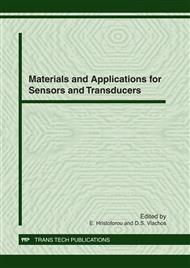p.79
p.83
p.87
p.91
p.96
p.100
p.104
p.108
p.112
Study and Application of Micrometric Alignment on the Prototype Girders of the CLIC Two-Beam Module
Abstract:
The Compact LInear Collider (CLIC), currently under study at CERN, aims at the development of a Multi-TeV e+ e- collider. The micro-precision CLIC RF-structures will have an accelerating gradient of 100 MV/m and will be mounted and aligned on specially developed supporting girders. The girder fabrication constraints are dictated by stringent physics requirements. The micrometric pre-alignment over several kilometers of girders, allow for the CLIC structures to fulfill their acceleration and collision functionality. Study of such girders and their sophisticated alignment method, is a challenging case involving dedicated mechanical design as well as prototype production and experimental testing.
Info:
Periodical:
Pages:
96-99
Citation:
Online since:
November 2011
Price:
Сopyright:
© 2012 Trans Tech Publications Ltd. All Rights Reserved
Share:
Citation:


